Chemistry or magic? This series of workshops where substances transform, reveals to children the different types of chemical reactions. They discover the fundamental principles of chemistry and consider the essential role of this science in our daily lives. Through simple and playful experiments as well as clear explanations, these workshops stimulate scientific curiosity and cultivate a lasting interest in the wonders of chemistry.
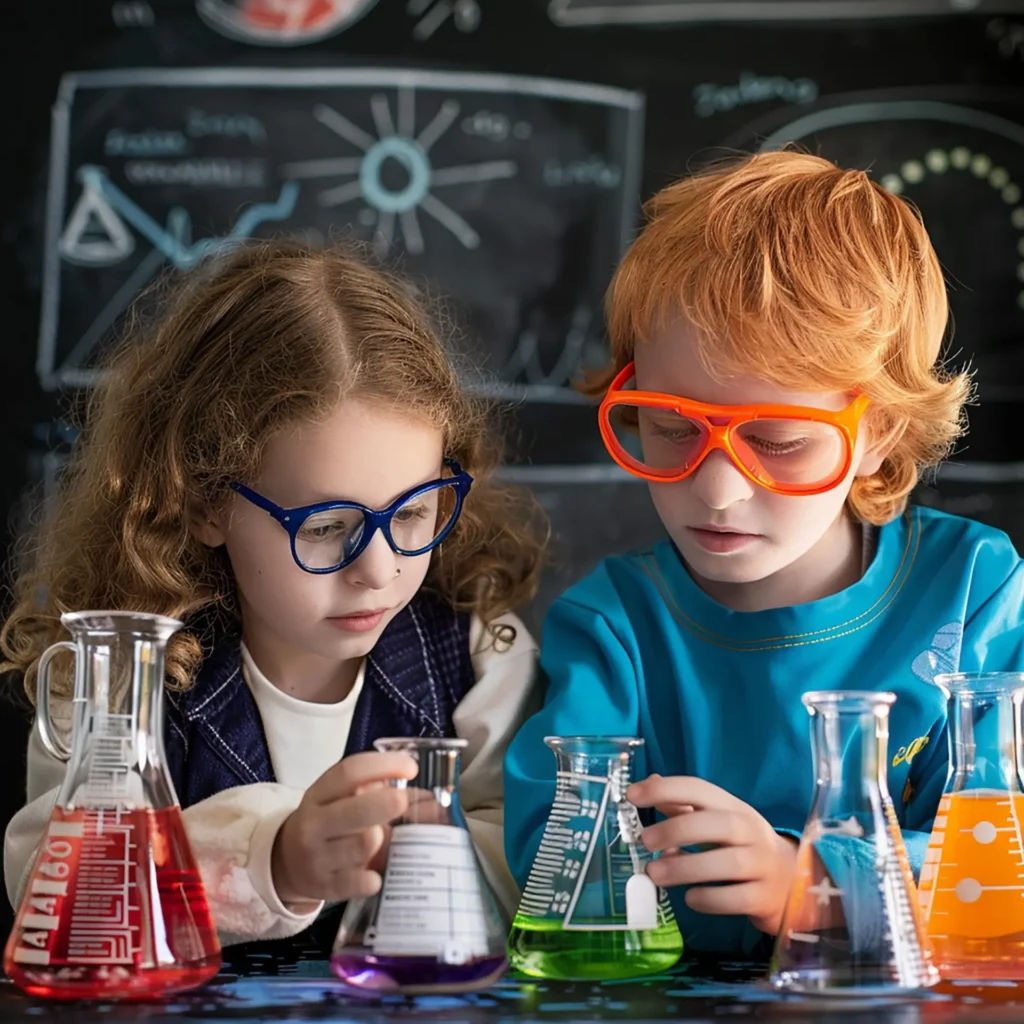
Chemistry to make art? Shaving cream to make modern patterns? This is what will do in this series of experiments that combine art and chemistry!
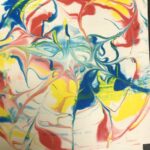
Budding scientists will be passionate about chemistry in this workshop that combines arts and sciences! Young artists enthusiastically experiment with various products with unique chemical properties; colourful and amazing reactions come to life under their creative fingers, transforming the space into an artistic laboratory. Children discover the magical marriage of science and art while creating their personalized masterpieces. From colorful bubbles to spectacular effects, each experiment encourages curiosity, stimulates creativity, and provides a artistic perspective on the magic of chemical reactions.
Chemical reactions can be visual, calorific, auditory or even explosive. So what does that mean? It means that we are going to create a FIZZ: we are going to make bath bombs!

Let’s dive into the sparkling world of bath bombs, a magical experience that unveils the mysteries of the most common chemical reactions! By making our own bath bombs, let’s discover how acid-base neutralization creates salt and water, releasing bubbles of gas in the process. Observing this effervescent reaction, we learn that acids contain H+ ions and bases contain OH- ions, which cause it. Let’s create our own bath bomb to take home in a small cellophane bag, perfect for gifting relaxing bubbles at home!
We all blew little soap bubbles ; some were bigger than others… But have you ever concocted your own bubble solution? Have you tried making square bubbles? Let’s try all this in this messy (but clean) experiment!
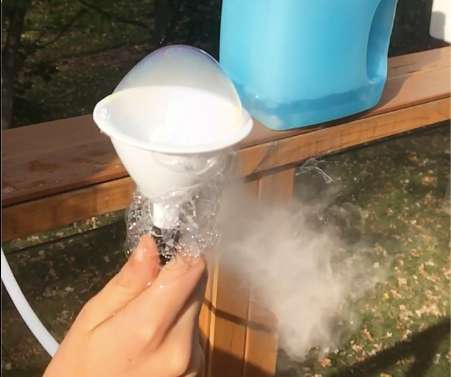
We’ve all blown small soap bubbles bought in stores; they’re all round. In this workshop, let’s concoct our own bubble liquid mixture and explore the properties of different wands to see if we can create bubbles of different shapes. By experimenting with liquid proportions and various materials, let’s discover the principles of surface tension and bubble geometry. Can we make bubbles of different sizes? Shapes? Or even more durable bubbles? This playful activity promotes hands-on learning of scientific concepts while encouraging creativity and curiosity.
Mixing specific substances can produce heat, colour, bubbles or other interesting “things.” This is what chemistry is all about! Let’s do a few experiments together to illustrate some of these outcomes (and have fun)! Chemistry sometimes produces strange reactions: heat, colour change, creation of new substances and of course… explosions! Here are a few experiments we’ll do together to demonstrate (and have fun)!

By combining different substances, observe various observations such as the production of heat, changes in colour, the formation of bubbles, and more. These reactions illustrate the fundamental principles of chemistry. Through playful experiments, we will explore these unique phenomena, including exothermic reactions and phase changes. These experiments not only demonstrate scientific concepts but also foster enthusiasm for chemistry and experimentation.
Creating colours from a simple black dot? It’s not magic; it’s chromatography! This is what we will do in this remarkable experiment.
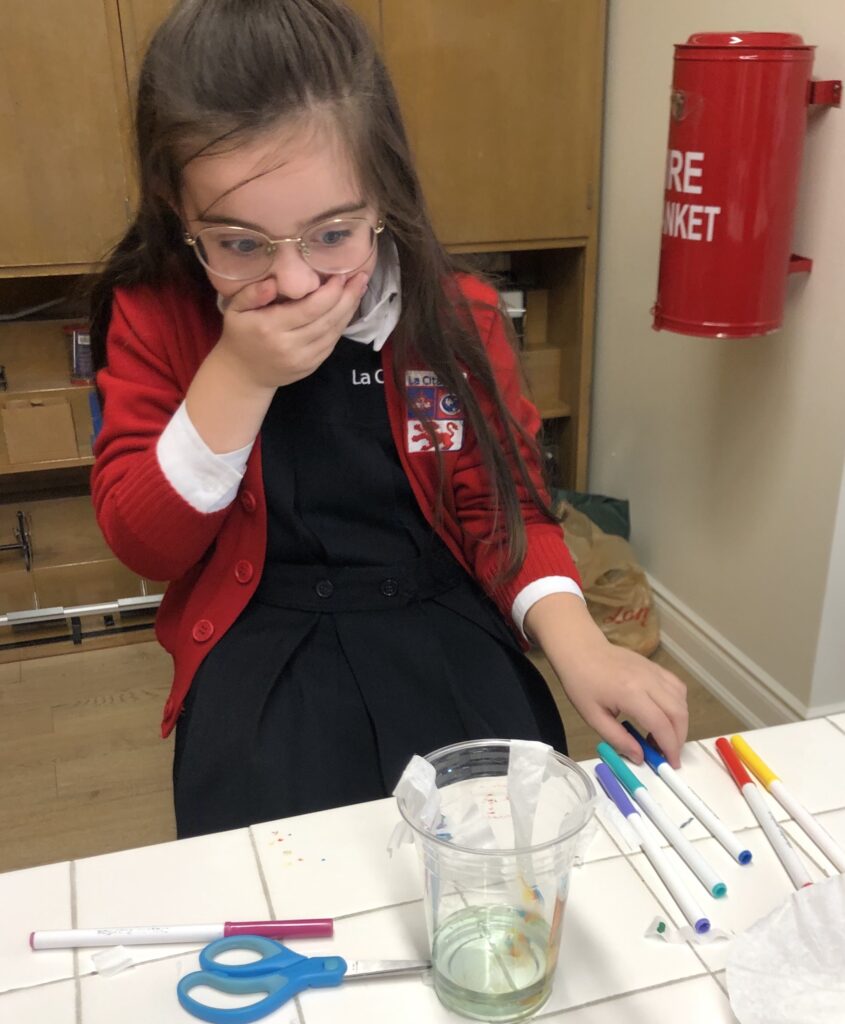
A surprising workshop that immerses us in the world of chromatography to demystify the secrets of colors hidden in a simple black marker! With a clever technique, let’s discover how pigments move magically on paper in the presence of a solvent. Let’s marvel at the different shades of the marker separating into artistic bands of colors, revealing the secrets of colors. This interactive experience is a true colorful adventure that takes us exploring the wonders of the science of colors.
Who would write an invisible message? Spies, magicians, lovers or friends exchanging secrets? Whatever our motive, we will make invisible ink, write a message and of course, discover the formula to reveal it.
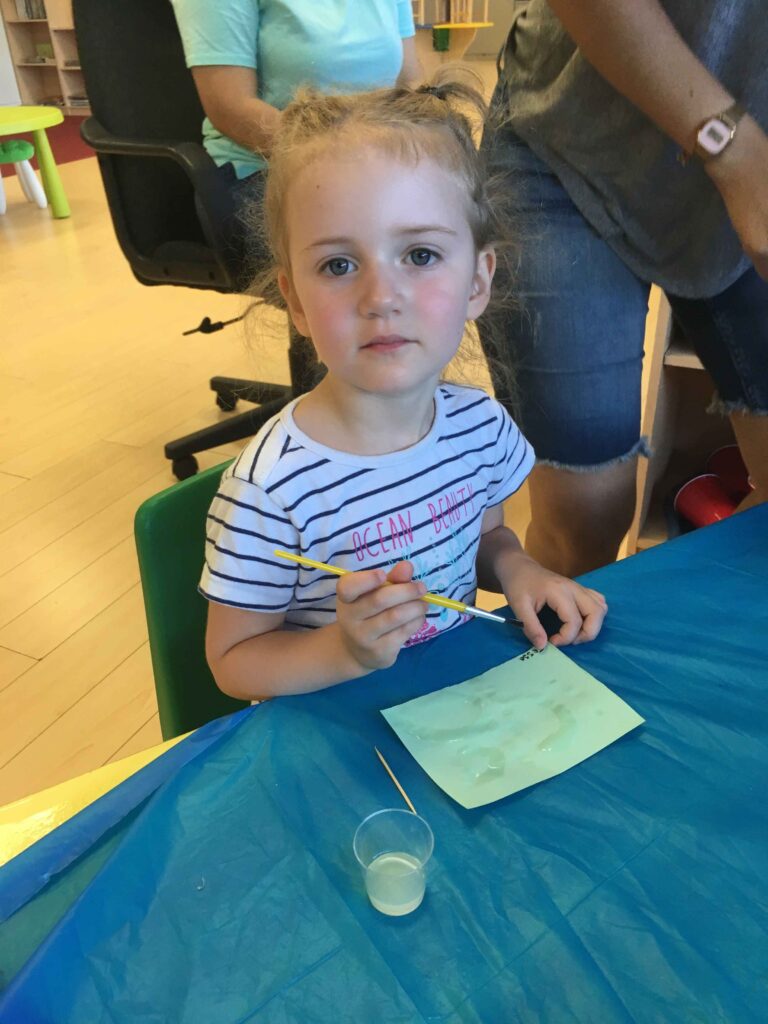
In the shadow of intrigue lie the secrets of invisible ink. What mysteries lurk behind these clandestine messages? Spies, magicians, lovers, or friends in search of mystery all find refuge in this secret ink. But let’s not just scribble in the dark! By exploring the chemistry of this enigmatic reaction, we will unveil the formula that reveals the hidden message, thus illuminating the mysteries buried in darkness.
Can art and science co-exist? Can we create attractive crystals of different shapes? Of course! This is what we will do in this artistic and decorative experiment.
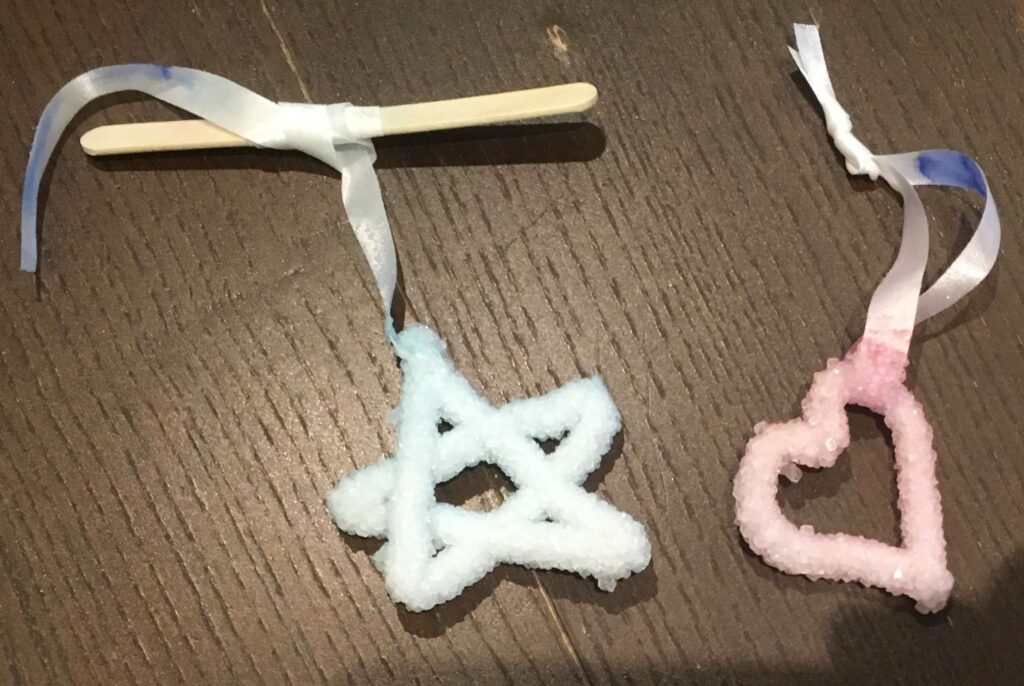
Let’s dive into the fascinating world of crystallization by experimenting with variations such as materials, temperature, and substances to determine the ideal conditions for forming unique crystals. Through this half-chemical, half-physical experience, children explore the basic principles of crystallization and understand how different variables influence the formation, size, and shape of crystals. This playful activity stimulates scientific curiosity while providing a creative exploration of natural processes.
Potential Hydrogen, pH… sounds complicated! Let’s do a few experiments to explore this basic (or acidic) chemical concept.

In this pH initiation workshop, participants explore the fundamental concept of Hydrogen Potential (pH). Through simple experiments, they discover the basics of chemistry by manipulating different pH indicators and observing the color changes associated with various solutions. This interactive experience allows them to understand the importance of pH in various contexts, from biology to household chemistry, while developing their scientific curiosity.
We all have been mesmerised by bubbles that slowly go up and down in a coloured solution. They look even better when they are OUR colourful bubbles! Let’s make chemical lava lamps that we can admire tirelessly.
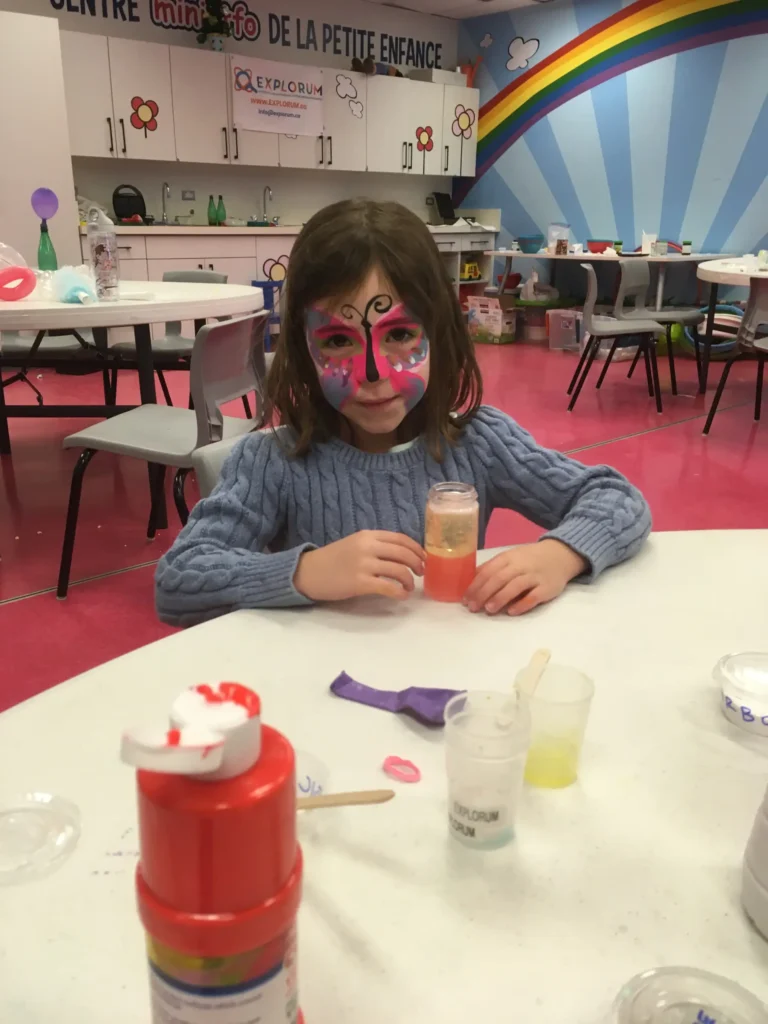
The captivating dance of bubbles rising and falling in a vibrant, colored solution has intrigued us all. There’s something uniquely mesmerizing about these ethereal spheres, especially when they’re our own creation. By crafting chemical lava lamps, we delve into the fascinating interplay of chemical reactions and fluid dynamics, producing a visual spectacle that captivates our senses. Join us in creating these colorful marvels and experience the wonder of scientific exploration firsthand.
No clay? No play-dough? No problem! Let’s make our own mixture to make dough with different properties to make decorative items.

If you don’t have clay or play-dough on hand, worry not! We’ll craft our own unique dough mixtures, each with distinct properties, perfect for crafting decorative items. Through this hands-on experience, we will learn the art of mixing ingredients to achieve desired textures and consistencies. With a variety of materials at our disposal, we’ll explore different recipes, experimenting with colors, and textures to create personalized dough creations. Get ready to unleash your creativity and bring your doughy masterpieces to life!
Paint that puffs? That’s what happens when you add a touch of chemistry and physics to art!
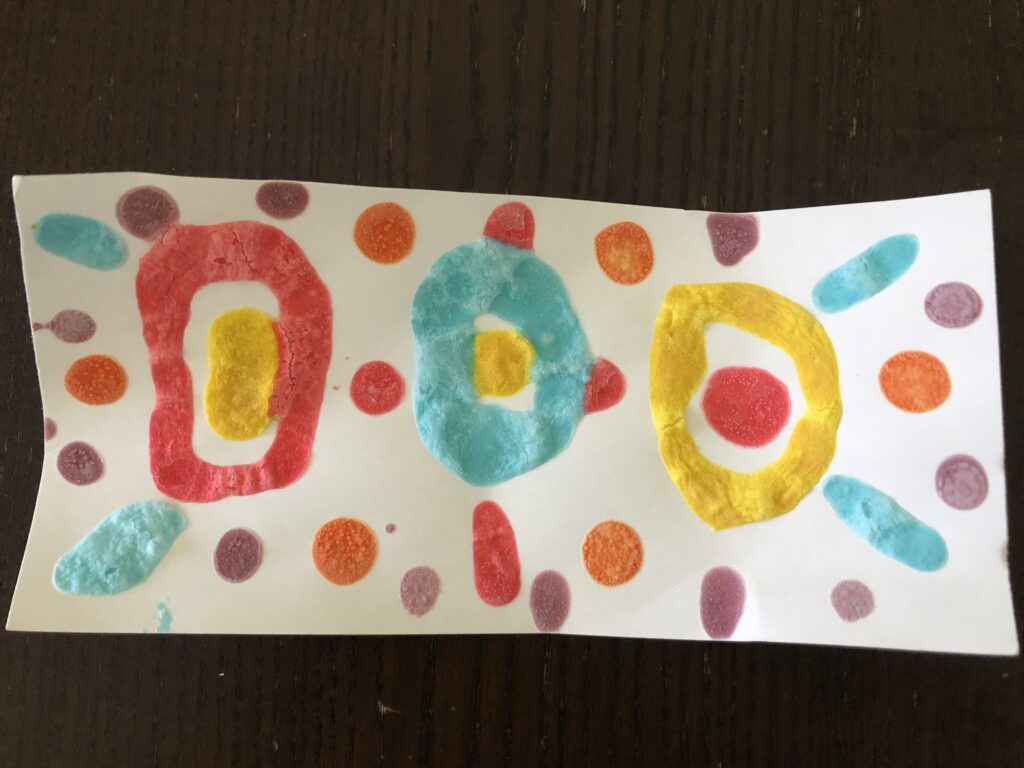
Make plastic out of milk? Thanks to magic!? no, thanks to science, we will transform milk molecules to make plastic. We will then compare our environmentally friendly plastic to industrial plastic.

Let’s explore the chemical properties of milk by transforming it into natural and environmentally friendly “plastic.” Let’s travel back a few decades, to the time before the invention of industrial plastic, to understand the early manufacturing methods. Using a simple technique, let’s shape this plastic into buttons, decorations, and other creative objects. An immersive experience that enhances our understanding of chemistry basics while raising awareness about the importance of sustainable solutions in our modern society.
Who doesn’t like playing with a viscous, slimy, sticky but fun substance? Let’s make slime together! Green, blue, yellow, red or even sparkly! Who doesn’t like playing with viscous, gooey, sticky and mysterious substances? In this chemistry experiment, we will produce strange polymers: sticky slime and a magic bouncing ball.
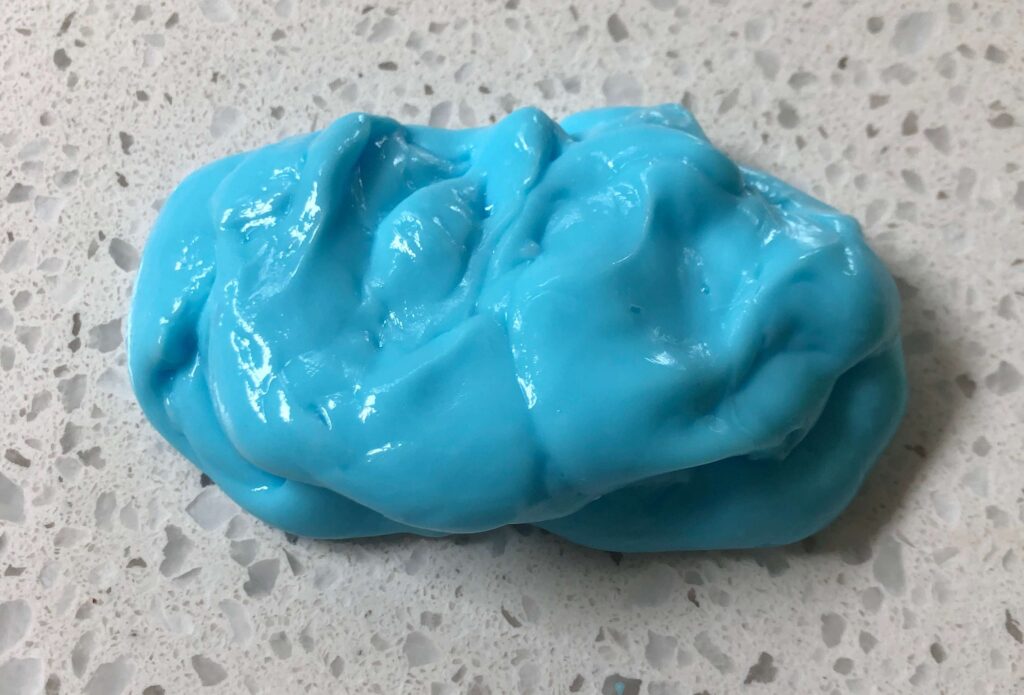
Today, we explore the synthesis reaction, where two or more substances combine to form a single product. In this experiment, we alter the chemical bonds of two reactants to create a polymer. In simple terms, we make adhesive glue and a bouncing ball by combining these reactants. It’s an exciting opportunity to observe how molecules transform to create new substances with unique properties.